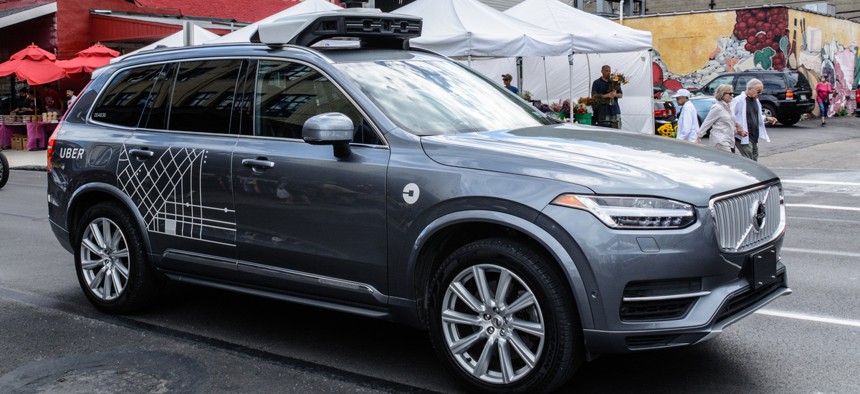Uber Is Resuming Self-Driving Car Tests

An Uber autonomous driving car, with back-up human driver aboard in Pittsburgh. Shutterstock

Connecting state and local government leaders
Pittsburgh will see autonomous Ubers again.
Nine months after one of Uber’s driverless cars killed a pedestrian in Tempe, Arizona, the company is resuming tests of self-driving cars on U.S. public streets.
Uber’s car struck and killed Elaine Herzberg, 49, on March 18 as she crossed a road outside of a crosswalk at night. Tempe police later concluded that the human safety driver tasked with monitoring the driverless Volvo SUV was streaming the TV show “The Voice” on her phone and looking down in the moments before the crash.
In response to the incident, Uber suspended all driverless testing on U.S. public roads. The company later laid off roughly 100 safety drivers in Pittsburgh and San Francisco, replacing them with about 55 “mission specialists” it said would be trained to operate driverless cars on both roads and test tracks.
The company is finally resuming self-driving operations in Pittsburgh after receiving one-year approval from Pennsylvania’s Department of Transportation that took effect Dec. 17. Uber is required to have one human monitor in its cars at speeds of less than 25 mph, and two monitors for speeds of 25 mph or greater, a department spokeswoman told the AP. Uber said it plans to have two people in its cars at all times.
Uber is also resuming “manual driving” in San Francisco and Toronto, meaning tests in which its self-driving cars are operated by a human driver. That means Uber once again has some tests of its driverless technology running in every location it was operating prior to the Herzberg incident, except for in Arizona, where its testing privileges remain suspended. For now the cars will only drive themselves on public roads in Pittsburgh, albeit with human supervision.
Eric Meyhofer, head of Uber’s driverless efforts, said in a blog post that the company spent the last nine months making safety “core to everything we do.” That included a report released in November that explained safety features of Uber’s technology and steps it had taken to improve the reporting of concerns. The report also shared protocols for mission specialists, including that they are banned from using mobile devices while the vehicle is moving or stopped in traffic.
“This required a lot of introspection and took some time,” Meyhofer wrote. “Now we are ready to move forward.”
Uber initially aimed to be back on the streets of Pittsburgh by the summer, but ran into trouble when mayor Bill Peduto claimed the company hadn’t informed him of its plans. (Uber said it had.) “This is not the way to rebuild a constructive working relationship with local government, especially when facing a public safety matter,” Peduto said in May.
In November, Uber applied for permission to resume driverless tests with the state of Pennsylvania. Pittsburgh also signaled it had come around to Uber returning. “I think we have increased confidence,” Karina Ricks, director of the city’s Department of Mobility and Infrastructure, told Reuters at the time.
Alison Griswold is a reporter for Quartz, which originally published this article.

NEXT STORY: Catching the digital transformation wave




